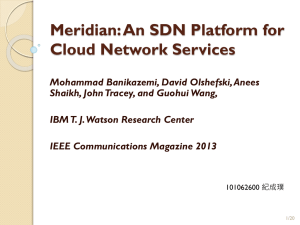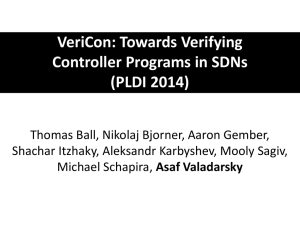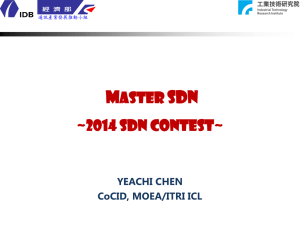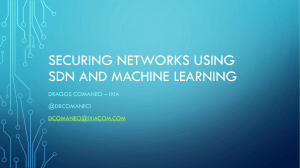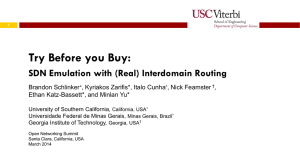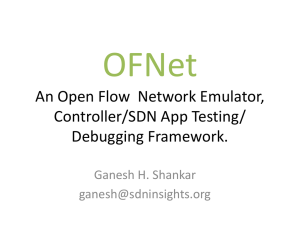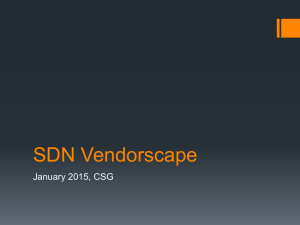NM Interoperability Technical Exchange
advertisement
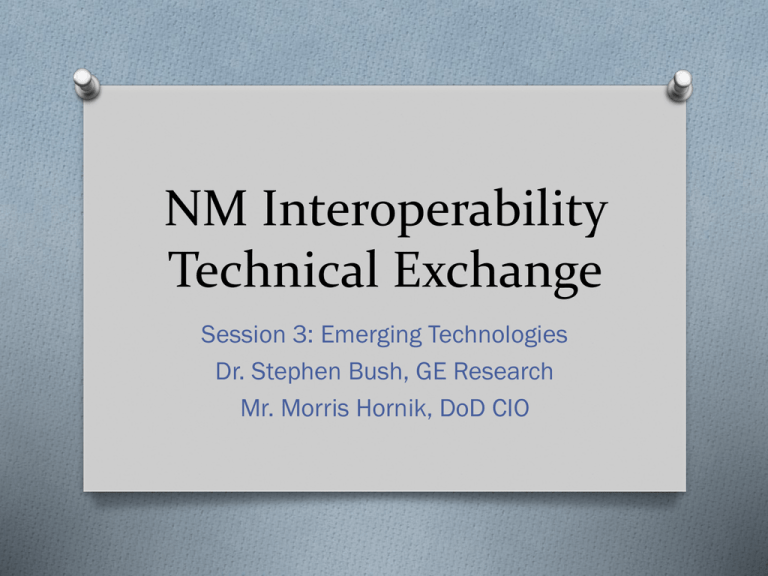
NM Interoperability Technical Exchange Session 3: Emerging Technologies Dr. Stephen Bush, GE Research Mr. Morris Hornik, DoD CIO Topics of Interest O SDN and applications O Cloud O Networks O Tactical/waveforms O Security O Emerging Technologies O Architectures need to account for emerging technologies, and should be the baseline for how things are engineered, deployed, maintained and managed. O SDN Architectures O Supply-Chain counter-fitting – HW and SW lineage O Commercial vs DoD O Financial industry has tighter security relationships/architectures to protect financial networks O SDN can establish coalition networks O Better provisioning O DRS built software routers, used in Blue-Force tracking network O SDN in tactical Benefits – dumb, small devices: size, weight and power Disadvantages – vulnerability, management complexity Challenges – do we know if the network is doing what it is supposed to be doing? O Diversity and redundancy – how critical is it in the tactical – increases footprint, power, vulnerability (space shuttle example of 5 identical processors) O O O O Opinion – SDN is premature O Recommend early investigation, testing to understand how SDN is applied, verified and secured O Good about SDN O Evolution on how networking and NM is done O Retooling of staff O Size, weight and power O May need new tools/languages to enable humans effectively manage O Understanding Risk O Defining Cost O Cognitive Radios O Is SDN an enabler of cognitive networking? O Evolved Packet Core O Standards and enforcement of standards O Trusted Platform Spec O Reference Implementation O Helps with interpretations of specifications O Need to make specs O How many times has a packet been access/encrypted? A ‘smart’ packet with code running may capture access/modification info. O SDN and MANET O Content-Aware routing O MPLS and SDN? O SDN is not able to control network interface? O SDN may not scale? O Networked Soldier O O O O O Avoid information overload Automated decision making for data flow Attractive target ‘big data’ problem QOS and QOE are important O How smart should the network be to keep things simple for the networked soldier O Company called Embrane O Evolution of SDN, new capabilities O Policy based management O SDN and other IT Drivers O Analytics and Business Intelligence O Big Data O Driven by need to rationalize IT costs, handling massive data volumes, mobile operations O Volumes of data /Cloud/Data Processing & Filtering/ Data Shaping are now needed for DoD – 100G transport O Patterns (data that is compressible also lends to better analysis) O Agile, localized standards (vice enterprise-wide standards) may be more effective and timely O O O O O Is this risky? Customers willing to give data? Interactions/interfaces can evolve (instead of designing/specifying it completely upfront) Smarts centralized initially, but pushed out (decentralized) over time Instead of grand network solution that does everything, let the components do what they need to do, their way; but a centralized solution that pulls it all together to work with independent components O Decentralized mgmt pitfalls O Too many data interfaces/relationships to manage O Trouble-shooting is not trivial O Knowing your network and knowing what ‘normal’ is O Deception Techniques that will make our networks safer O What can we do to make enemies see our network differently than what it is+ O What is the value of doing this? O CS and Neuroscience – biological system is compromised – risk management is more crucial


